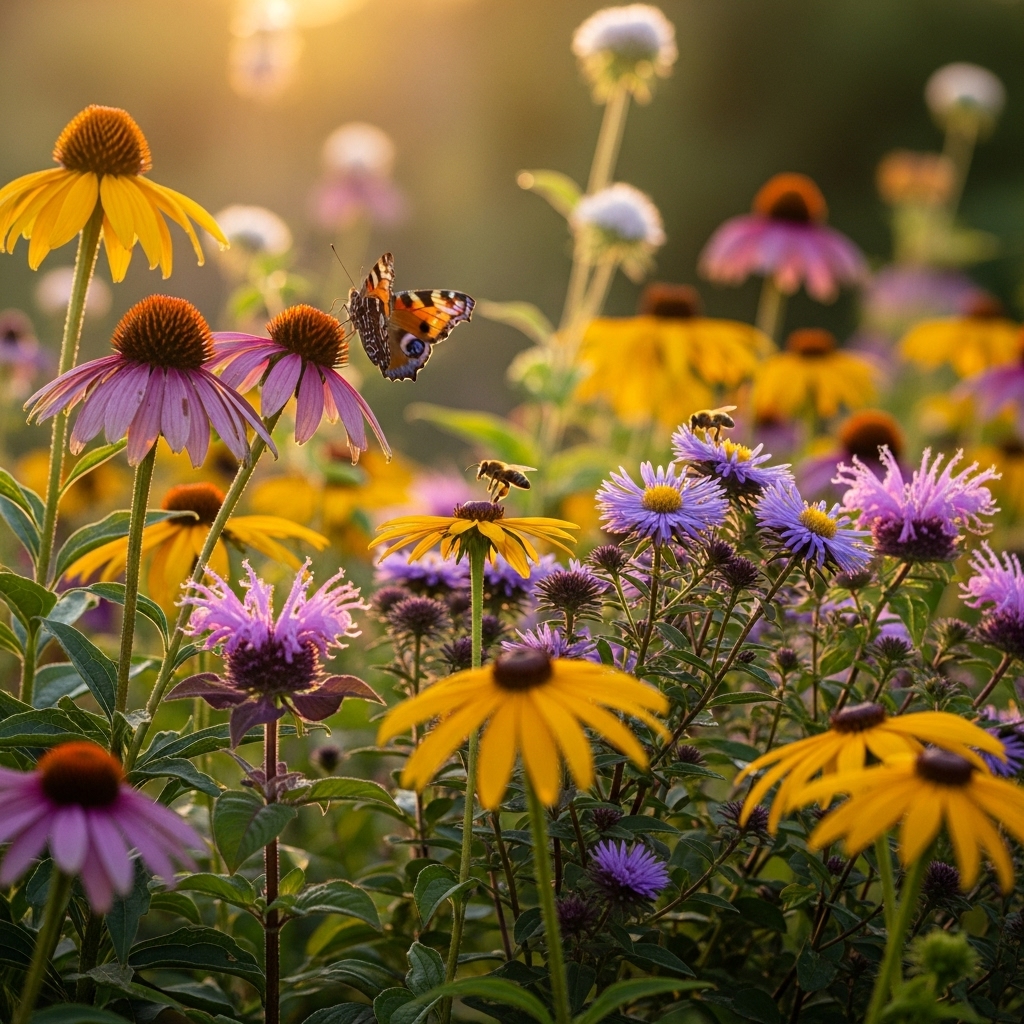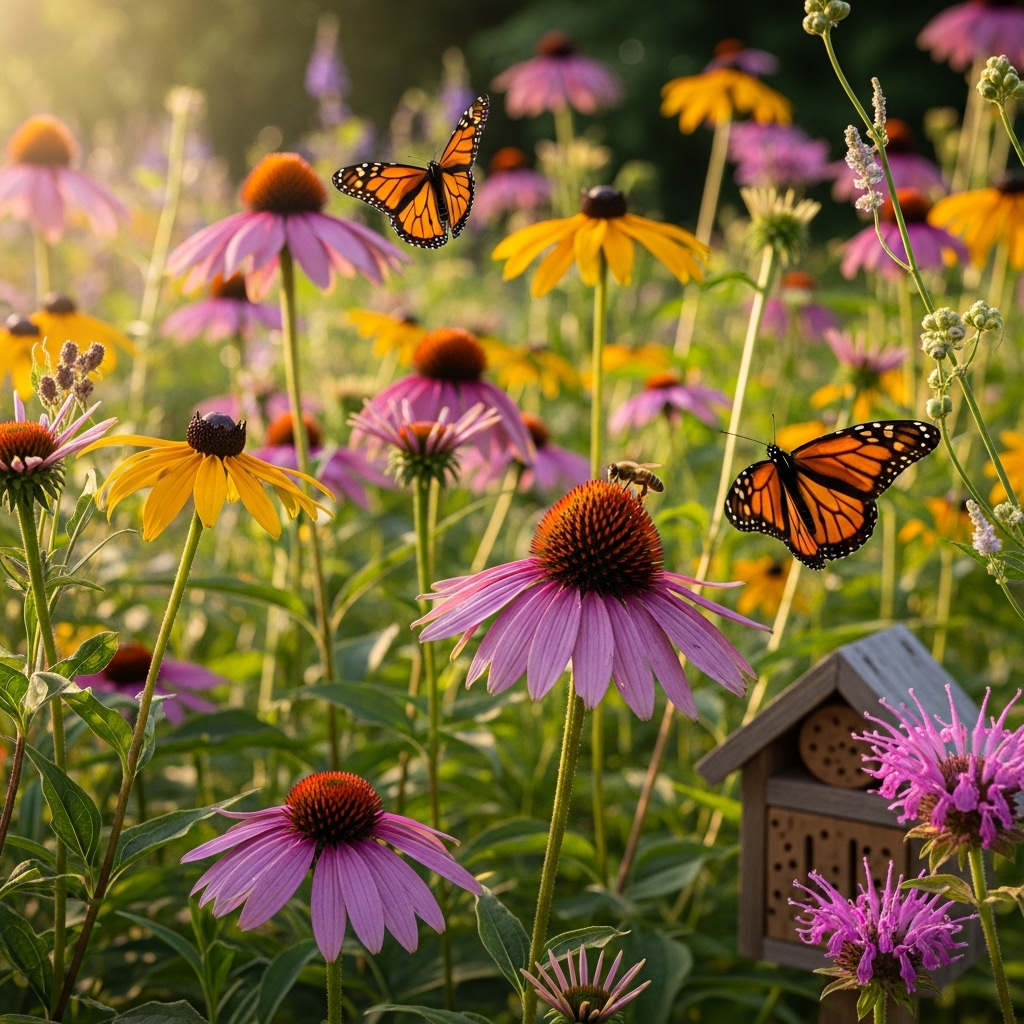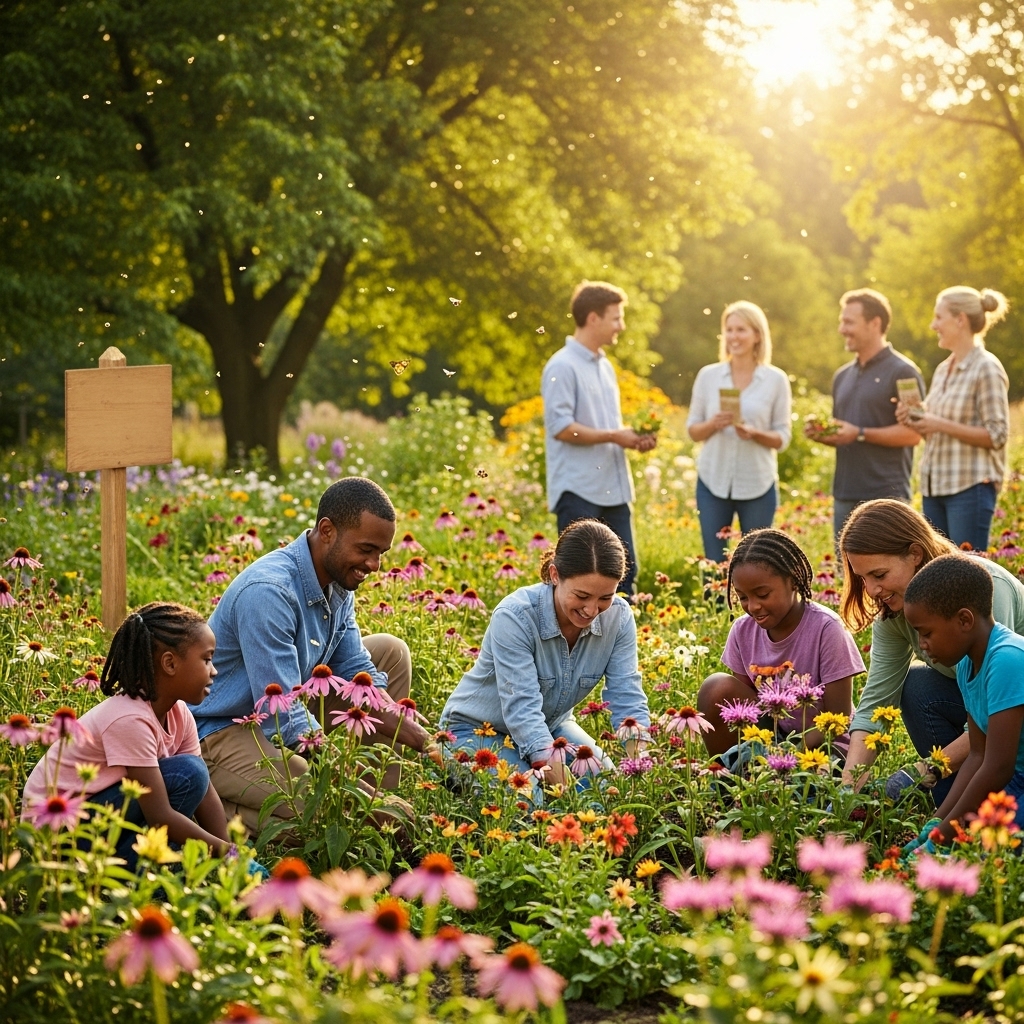Creating an Illinois native garden is not just a beautiful endeavor; it’s a crucial step toward supporting our essential pollinators—like butterflies and bees—that play a vital role in our ecosystem. Let’s dive into how I made my garden a haven for these beautiful creatures.
Understanding the Importance of Native Plants

When I first decided to plant a garden that attracts butterflies and bees, I quickly learned that the choice of plants is one of the most critical factors. Native plants have evolved alongside local wildlife, making them the perfect choice for attracting and sustaining pollinators. They provide the right kind of food and habitat that these creatures need. In Illinois, we have an impressive array of native flora that not only adds beauty to our gardens but also supports a rich variety of butterfly and bee species.
The Benefits of Choosing Native Flora
By incorporating native plants into my garden, I noticed several immediate benefits. First, these plants are adapted to thrive in our local climate and soil conditions. This means they require less maintenance compared to non-native species. I spent less time worrying about watering and fertilizing, which allowed me to enjoy my garden more.
Another significant advantage is their resistance to local pests and diseases. Native plants have developed natural defenses over the years, reducing the amount of chemical pesticides I felt tempted to use. This, in turn, creates a healthier environment for not only the pollinators but also the surrounding wildlife and beneficial insects.
Choosing the Right Plants
In Illinois, various native plants effectively attract butterflies and bees. Some of my favorites include:
- Milkweed (Asclepias spp.): This plant is essential for monarch butterflies, as it serves as the sole host for their caterpillars. I planted several varieties, and the sight of the monarchs fluttering around my garden has been breathtaking.
- Echinacea (Coneflower): Not only does this plant add vibrant color to my garden, but its nectar-rich flowers are a favorite for many bees and butterflies.
- Black-eyed Susan (Rudbeckia hirta): With its bright yellow petals and dark centers, this plant attracts a variety of pollinators while providing a cheerful burst of color.
- Bee Balm (Monarda spp.): True to its name, bee balm is a magnet for bees, butterflies, and hummingbirds. Its fragrant blooms are just delightful to have in the garden.
- Goldenrod (Solidago spp.): Often misunderstood as a weed, goldenrod is a late-season bloomer that provides vital nectar for pollinators as they prepare for winter.
When selecting plants, I also made sure to consider bloom times. I wanted to ensure that there would be flowers available throughout the growing season. This strategy guarantees that my garden remains attractive to pollinators from early spring to late fall. For example, early bloomers like wild columbine (Aquilegia canadensis) can provide food as soon as the weather warms, while late bloomers like asters (Symphyotrichum spp.) keep the feast going into the autumn months.
Creating Diverse Habitats
Another aspect of my native garden journey involved creating diverse habitats. Butterflies and bees need more than just flowers; they require places to rest, hide from predators, and breed. I started by incorporating various layers into my garden design. This included taller plants like sunflowers and goldenrod at the back, with shorter plants in front. I also added patches of bare soil, which are essential for ground-nesting bees.
In addition to plants, I created charming little nooks using rocks, logs, and other natural materials. These structures served as resting spots and shelters for pollinators. I even set aside a small area of my garden where I allowed some wildflowers to flourish without intervention. This not only attracted more species but also added to the natural aesthetic I aimed to achieve.
Water and Sunlight: Vital Elements
While plants are essential, I quickly learned that water and sunlight are equally important in attracting butterflies and bees. Pollinators need a reliable water source, so I placed shallow dishes filled with pebbles and water around my garden. This allows them to sip safely without the risk of drowning. I made sure to refill these dishes regularly, especially during the hot summer months.
Sunlight also plays a crucial role. Most butterflies and bees are drawn to sunny areas, so I positioned my garden in a space that receives at least six hours of sunlight each day. I avoided planting dense hedges or tall structures that could cast shadows over my garden, ensuring my plants received the sunlight they required to thrive.
Maintaining Your Native Garden
Once my garden was established, I discovered that maintenance was essential to keep it a healthy environment for pollinators. I adopted a hands-off approach regarding weeding and pest control. I learned to recognize beneficial insects and let them do their job in keeping unwanted pests in check. Additionally, I allowed some of the plants to go to seed, providing food for birds and more habitat for the butterflies and bees I cherished.
As I continued to nurture my native garden, I was delighted to witness the abundance of butterflies and bees that began to visit regularly. Each season brought new colors, sounds, and life to my garden, transforming it into a vibrant ecosystem that I was proud to share with the world.
Encouraging Pollinator Activity

As I became more immersed in my native garden project, I started to explore additional ways to encourage pollinator activity. I discovered that creating a buzz wasn’t just about planting the right flora; it was also about the overall environment I cultivated. I began to pay attention to the small details that could make a significant impact on attracting butterflies and bees.
Planting in Clusters
One of the first changes I made was to plant flowers in clusters rather than scattering them throughout the garden. I learned that pollinators are more likely to visit when there are large patches of the same flower. This clustering makes it easier for them to find food sources, as they can gather nectar more efficiently. For example, I planted groups of purple coneflower and butterfly weed together, and I was amazed at the number of bees that flocked to these areas. It gave the garden an enchanting burst of color while maximizing pollinator visits.
Providing Host Plants for Caterpillars
Another exciting aspect of my journey was incorporating host plants for caterpillars. Not only did I want to attract adult butterflies and bees, but I also wanted to provide a nurturing environment for their larvae. This meant including specific plants that caterpillars thrive on, such as the parsley and dill I planted to support black swallowtail butterflies. Watching these caterpillars munch away on their host plants was a joy, knowing I was contributing to their life cycle. It felt rewarding to witness the transformation from caterpillar to chrysalis and eventually to a stunning butterfly.
Reducing Lawn Areas
I also decided to rethink the areas of my yard dominated by traditional lawn grasses. I learned that lawns provide very little for pollinators and require considerable water and maintenance. By replacing sections of the lawn with native wildflowers and grasses, I increased the area available for pollinators to thrive. I even left a portion of the yard unmowed, allowing wildflowers to grow naturally. This decision not only enhanced the biodiversity of my garden but also reduced my workload in maintaining a pristine lawn.
Creating Pollinator Houses
As my confidence grew, I ventured into building simple pollinator houses. I constructed small shelters using natural materials like twigs, hollow stems, and bamboo tubes, which create perfect nesting spots for solitary bees. Placing these houses throughout my garden provided additional refuge and encouraged bees to make my garden their home. I was thrilled to see various species take advantage of these structures, adding yet another layer of life to my garden.
Educating Others
As my garden flourished, I couldn’t keep this beautiful secret to myself. I wanted to share my experiences and knowledge with friends, family, and neighbors. I organized casual gatherings and invited them to see the transformation I had accomplished. I emphasized the importance of native plants and how anyone could create their own pollinator-friendly space, regardless of size. It was rewarding to see the spark of interest in others, and I felt a sense of community growing around our shared goal of supporting the environment.
Documenting the Journey
I began documenting my gardening journey through a blog and social media. Sharing photos of the butterflies and bees that visited my garden became a passion project. I wanted to inspire others to appreciate the beauty of native plants and the vital role pollinators play in our ecosystem. The more I shared, the more feedback I received from fellow gardening enthusiasts, further solidifying my commitment to this cause. Each comment and message motivated me to continue my efforts and explore new ways to enhance my garden.
Connecting with Local Conservation Efforts

As I delved deeper into the world of native gardening, I discovered local conservation groups focused on promoting native species and protecting pollinator habitats. I decided to get involved, attending workshops and participating in community planting events. These gatherings connected me with like-minded individuals who shared my passion for preserving our local ecosystems. Through these connections, I learned about the broader issues facing our pollinators, such as habitat loss and pesticide use, which fueled my desire to advocate for more sustainable gardening practices.
Volunteering not only allowed me to contribute to valuable causes but also helped me expand my knowledge. I gained insights from experienced gardeners and conservationists who shared their best practices and tips for creating a more pollinator-friendly environment. By collaborating with others dedicated to this mission, I felt like I was part of a larger movement, working together to make a difference.
Final Thoughts
Creating a native garden has been an enriching experience that has deepened my connection to nature and its inhabitants. Through careful planning, thoughtful design, and a commitment to supporting our pollinators, I transformed my garden into a vibrant ecosystem. I encourage anyone interested in gardening to explore the beauty and benefits of native plants. Each small step we take can significantly impact our environment, fostering not just a garden, but a thriving habitat for butterflies, bees, and countless other creatures.
